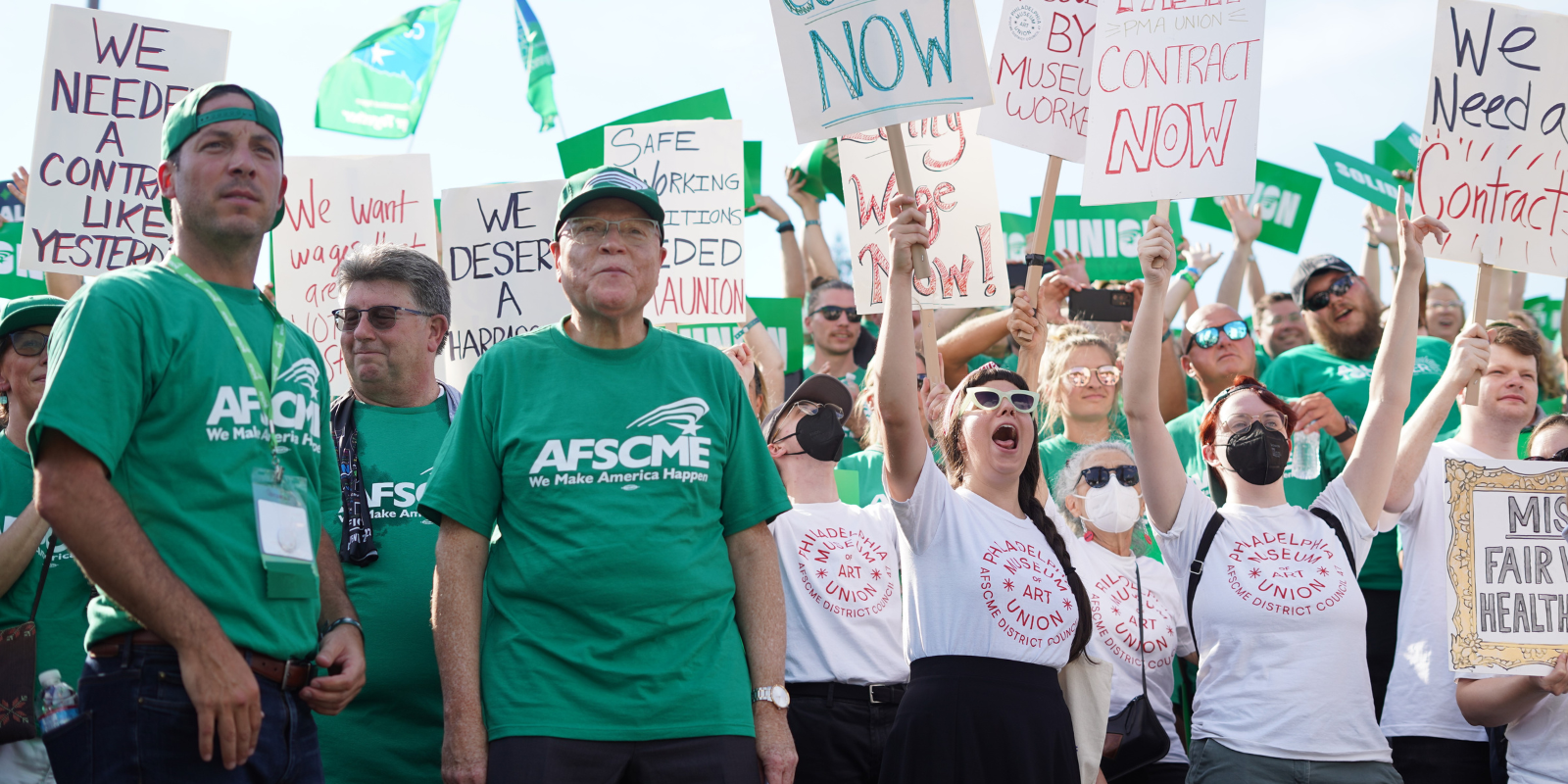In fall 2022, after two years of tense negotiations and a three-week strike, members of the Philadelphia Museum of Art (PMA) Union ratified an agreement that satisfied all of the workers’ requirements for a fair contract. The contract, which runs through June 2025, included key provisions such as hourly wage increases, affordable health care options, paid parental leave and longevity raises.
However, even though the contract went into effect more than a year ago, workers say the museum is shortchanging many workers who are contractually guaranteed to receive longevity pay.
According to PMA Union (AFSCME District Council 47), employees are set to receive a raise for every five years of service. However, just weeks after the strike ended, workers were shocked to learn that management only intended to give employees longevity pay if their work anniversaries fell within a certain time frame set by the museum.
Halcyone Schiller, the president AFSCME Local 397, the union for cultural workers across Philadelphia, condemned the museum’s action and said a grievance was filed immediately.
“The purpose of longevity pay is to reward full-time and part-time staff who have been working and contributing to the PMA for a long time,” said Schiller, a conservation technician at PMA. “But according to management’s interpretation, if an employee reaches their 10-year work anniversary outside of the time frame designated by management, they would not qualify for longevity pay.”
Schiller continued, "But if another employees’ five-year anniversary fell within the qualifying dates, how does it make sense that they would get longevity pay when it was denied to an employee that has worked at the museum for twice as long? [Management]’s logic does the exact opposite of what it’s supposed to do by further exacerbating issues of inequity.”
According to Schiller, the dispute affects one-third of the union’s bargaining unit and has resulted in only 6% of staff actually receiving longevity pay.
In addition to the grievance, workers launched a petition urging the PMA to honor their commitment and pay workers what they are owed. The petition garnered more than 4,000 signatures and gained the attention and support of community allies and some elected officials. Staff at the PMA also organized various actions during the museum’s all-staff meetings, including a demonstration during which workers wore signs highlighting their years of service at the museum.
“I was happy to vote for our contract at the end of [our] strike, partly because of how the longevity pay clause addressed historically low and stagnant pay rates with a modest increase for years of service,” said Sarah Roche, a label technician at the PMA. “This is important to us because it recognizes people’s genuine dedication to the museum, institutional knowledge and skilled labor.”
Roche added, “Although I have worked at the museum for 26 years, I am not in line to earn any longevity pay as the museum is currently interpreting the language. It is painful to not get the raise I expected, both personally and financially. It is bewildering that management’s strange position on longevity is actually making pay rates less equal.”
Members of the PMA Union and management expect to enter arbitration later this year. Roche and other workers in similar situations hope that things turn around soon.
